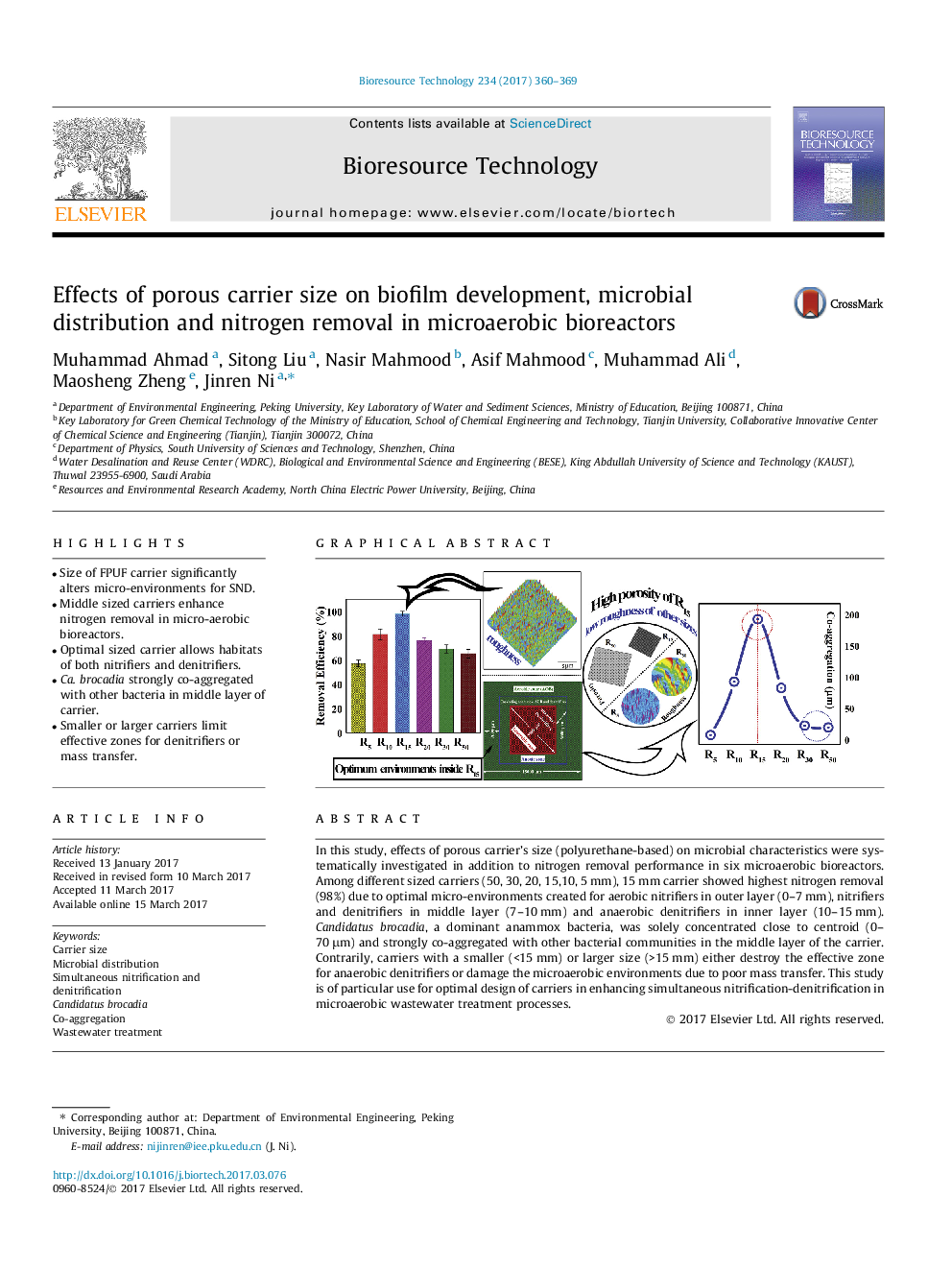| کد مقاله | کد نشریه | سال انتشار | مقاله انگلیسی | نسخه تمام متن |
|---|---|---|---|---|
| 4997313 | 1459909 | 2017 | 10 صفحه PDF | دانلود رایگان |
• Size of FPUF carrier significantly alters micro-environments for SND.
• Middle sized carriers enhance nitrogen removal in micro-aerobic bioreactors.
• Optimal sized carrier allows habitats of both nitrifiers and denitrifiers.
• Ca. brocadia strongly co-aggregated with other bacteria in middle layer of carrier.
• Smaller or larger carriers limit effective zones for denitrifiers or mass transfer.
In this study, effects of porous carrier’s size (polyurethane-based) on microbial characteristics were systematically investigated in addition to nitrogen removal performance in six microaerobic bioreactors. Among different sized carriers (50, 30, 20, 15,10, 5 mm), 15 mm carrier showed highest nitrogen removal (98%) due to optimal micro-environments created for aerobic nitrifiers in outer layer (0–7 mm), nitrifiers and denitrifiers in middle layer (7–10 mm) and anaerobic denitrifiers in inner layer (10–15 mm). Candidatus brocadia, a dominant anammox bacteria, was solely concentrated close to centroid (0–70 μm) and strongly co-aggregated with other bacterial communities in the middle layer of the carrier. Contrarily, carriers with a smaller (<15 mm) or larger size (>15 mm) either destroy the effective zone for anaerobic denitrifiers or damage the microaerobic environments due to poor mass transfer. This study is of particular use for optimal design of carriers in enhancing simultaneous nitrification-denitrification in microaerobic wastewater treatment processes.
Figure optionsDownload high-quality image (402 K)Download as PowerPoint slide
Journal: Bioresource Technology - Volume 234, June 2017, Pages 360–369
